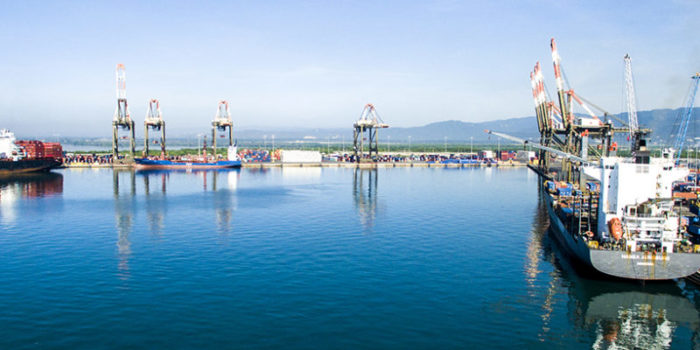According to the North P&I Club, recent years have seen several incidents in the Port of Kingston in Jamaica where vessels have made contact with a particular quay on the entrance to the port’s basin. These contact incidents have caused damage to the port, to the vessel and on sometimes pollution.
On each case, the appropriateness of the speed of approach of the ship into the turning basin was questionable. Other factors that have taken place include:
- Tugs made fast very late as they did not approach the vessel until it arrived at the turning basin;
- This forced the vessel to maintain its course towards the quayside ahead until the tug was made fast;
- Not enough tugs were available;
- Tugs made fast in inappropriate positions;
- Poor positioning in the approach channel;
- Vessel’s arrival coincided with outbound vessels forcing it to miss the turning basin.
[smlsubform prepend=”GET THE SAFETY4SEA IN YOUR INBOX!” showname=false emailtxt=”” emailholder=”Enter your email address” showsubmit=true submittxt=”Submit” jsthanks=false thankyou=”Thank you for subscribing to our mailing list”]
Because of these incidents North Club suggests Masters and bridge officers to ensure that these potential issues are described in the ship’s passage plan and they must be discussed before any arrival.
Namely, crewmembers are reminded of the importance of:
- A well prepared and agreed ‘berth to berth’ passage plan that includes emergency anchorages, no-go zones, a point of no return and expected vessel speeds;
- Good communications between the bridge team and the pilot where the intended passage and berthing plan is discussed and agreed. This should include tug information, other vessel movements and vessel speed;
- The bridge team monitoring the agreed passage and report the vessel progress to the Master and pilot. Report any deviations from the agreed passage such as cross track error, and vessel speed;
- Vessel movements in the port. These should be monitored by the bridge team, and reported to the Master and pilot;
- Records: the bridge team should maintain accurate records of the berthing including fixing the vessel’s position on the chart or ECDIS.
If the Master and the bridge team are in doubt of what they should do, North recommends challenging the pilot.
Reduce the risk of any contact issues by following best practice, being alert and establishing good communications between the pilot and bridge team
North P&I Club concluded.




























































